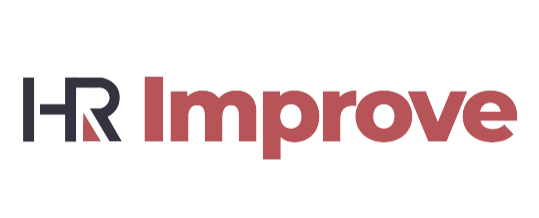How to Deal With Difficult Employees: Expert Strategies for Managing Challenging Team Members
April 18, 2024 2024-06-19 16:08How to Deal With Difficult Employees: Expert Strategies for Managing Challenging Team Members

How to Deal With Difficult Employees: Expert Strategies for Managing Challenging Team Members
If you’re here looking for how to deal with difficult employees in your organization or your team, it means one thing — termination is not an option for you. I learned a long time ago that the easiest way to deal with a difficult employee is NEVER to fire them. I’ve also learned over the years that difficult employees are usually the ones with greater potential when you handle them the right way. Again, if you’re not considering firing yet, you’re more of an exceptional leader than you know.
In this guide, I’m not going to prescribe a list of strategies to deal with difficult employees, but I will share real-life examples of how I turned troublesome employees into tremendous ones. I’ll also share some of the examples from the book I read on Leading the Unleadable by Allan Willett. This will help you think and devise your way of handling challenging team members. Come along!
How to Deal With Difficult Employees
First of all, how do you define a difficult employee? To me, a difficult employee is that employee who wants to have things go their way even if it means destabilizing the entire team. In his book, Allen Willett described them as the Mavericks. You could term them difficult, and you’d be right, but when handled the right way, you would be amazed at the magic they’ll bring to the team and the organization in general.
Remember I said that these supposedly difficult employees have the greater potential of turning things around for the better when handled the right way? Well, you’re about to find out why I said that. I’m going to share with you my experience working with these ‘difficult’ employees and how I turned them around.
Just before I get into it, the secret to effectively handling difficult employees is to give them what they want or make them think they have what they want—you know, a win-win situation kinda thing.
How to Deal With Difficult Employees: My First Experience
I was contracted in 2017 to supervise a team of software developers. Among the team members were Chris who’s a bit of a maverick, and Nathan who likes playing by the rules. Nathan happens to be the team leader. Chris on the other, hand, is incredibly talented, always coming up with new ways to solve problems, but sometimes needs help to follow the team’s established processes and timelines.
The project I was assigned to oversee came with a strict deadline, and to be honest that would be my first project. Not only that, I didn’t have enough experience when it came to tech, but hey, I knew that with the right people, I could get anything done. I knew Chris was a Maverick 30 seconds into addressing the team.

Read also: Mastering the Art of HR Excellence: Unveiling the 9 Effective Strategies for Workplace Success
As expected, Chris proposes a completely different approach, arguing that it will produce better results. I recognized the potential in Chris’s idea, but I knew as did Nathan, that sticking to the agreed-upon plan was crucial to meeting the deadline and maintaining consistency with the project requirements.
Instead of dismissing Chris’s idea outright, I scheduled a meeting to discuss it further. During the meeting, I praised Chris’s creativity and the potential of the new approach but emphasized the importance of adhering to the current plan to meet the deadline and ensure alignment with the project objectives.
I did suggest that we can explore implementing Chris’s idea in future iterations but for now, the team needs to focus on delivering results according to the agreed-upon strategy. I also offered to work closely with Chris to find ways to incorporate his innovative ideas within the existing framework.
By acknowledging Chris’s contributions and finding a compromise that respects both his creativity and the team’s goals, I effectively handled the situation, maintaining harmony within the team while also encouraging Chris’s innovative spirit.
How to Deal With Difficult Employees: Emily’s Experience
Emily is more like my mentor in the HR field. In one of my sessions with her, she told me about her experience with Mark and Lisa, who almost jeopardized the company’s communication culture. She did mention that they both were assets the company needed at the time. Her story…
Mark and Lisa have been working together on a project, but their communication styles clash, leading to tension and inefficiencies in their collaboration. Their disagreements have escalated to the point where they are openly hostile towards each other during team meetings, affecting team morale and productivity.
Emily becomes aware of the situation through reports from other team members and decides to intervene. Instead of simply reprimanding Mark and Lisa, Emily schedules separate meetings with each of them to understand their perspectives and concerns.

Check out my article on the Skills & Qualities of a good HR Manager
During the meetings, Emily listens actively to both Mark and Lisa, allowing them to express their frustrations and concerns without interruption. She acknowledges their feelings and emphasizes the importance of resolving conflicts professionally to maintain a positive work environment.
Emily then facilitates a joint meeting with Mark and Lisa, where she acts as a mediator. She encourages open communication, ensuring that both parties have the opportunity to voice their grievances and propose solutions. Emily helps them identify common ground and develop a plan for moving forward collaboratively.
Throughout the process, Emily provides ongoing support and guidance to Mark and Lisa, offering conflict resolution training and resources to help them improve their communication and interpersonal skills. She also monitors their progress and conducts follow-up meetings to ensure that the issues are effectively addressed.
By taking a proactive and empathetic approach, Emily successfully resolves the conflict between Mark and Lisa, fostering a more harmonious work environment and improving team dynamics. Her efforts not only mitigate the immediate conflict but also equip Mark and Lisa with valuable conflict resolution skills for future interactions.
I would have loved to share my recent experience from 3 months ago, but I think the one from Allen White from the book Leading the Unleadable will interest you more. Come on!
How to Deal With Difficult Employees: Extract From Allen Willett’s “Leading The Unleadable”
This is the case of Alison who was leading a significant software development project, where Hank was a technical genius and responsible for the fundamental architecture and design of software system. The project started strongly, but when it seemed like the team was well into the software development, Alison was seeing problems emerging repeatedly.
The other software developers were complaining that Hank was going into the system and rewriting their code without even talking to them about it. He was also uninvitedly sitting with people while they were writing codes and telling them what to type. Besides the other developers getting more upset and less engaged, his behavior was causing Hank to get further behind on the work he needed to do.
When Alison confronted Hank about this, he became agitated and insisted that the developers would mess the system up without him. Just as I knew that Nathan was on the right track, Alison knew that the developers knew what they were doing, but the challenge was how to get Hank, the “difficult” employee to be a a force for good.
Read up on how Alison was able to turn Hank from troublesome to tremendous in Part 2 of the book Leading the Unleadable
Conclusion
There you have it! No particular strategy, but rather a blueprint on how to deal with difficult employees and handle challenging team members. Mission accomplished. If you can think of a way to create a win-win situation, you’ll always turn the troublesome employees into tremendous! It works like magic.


